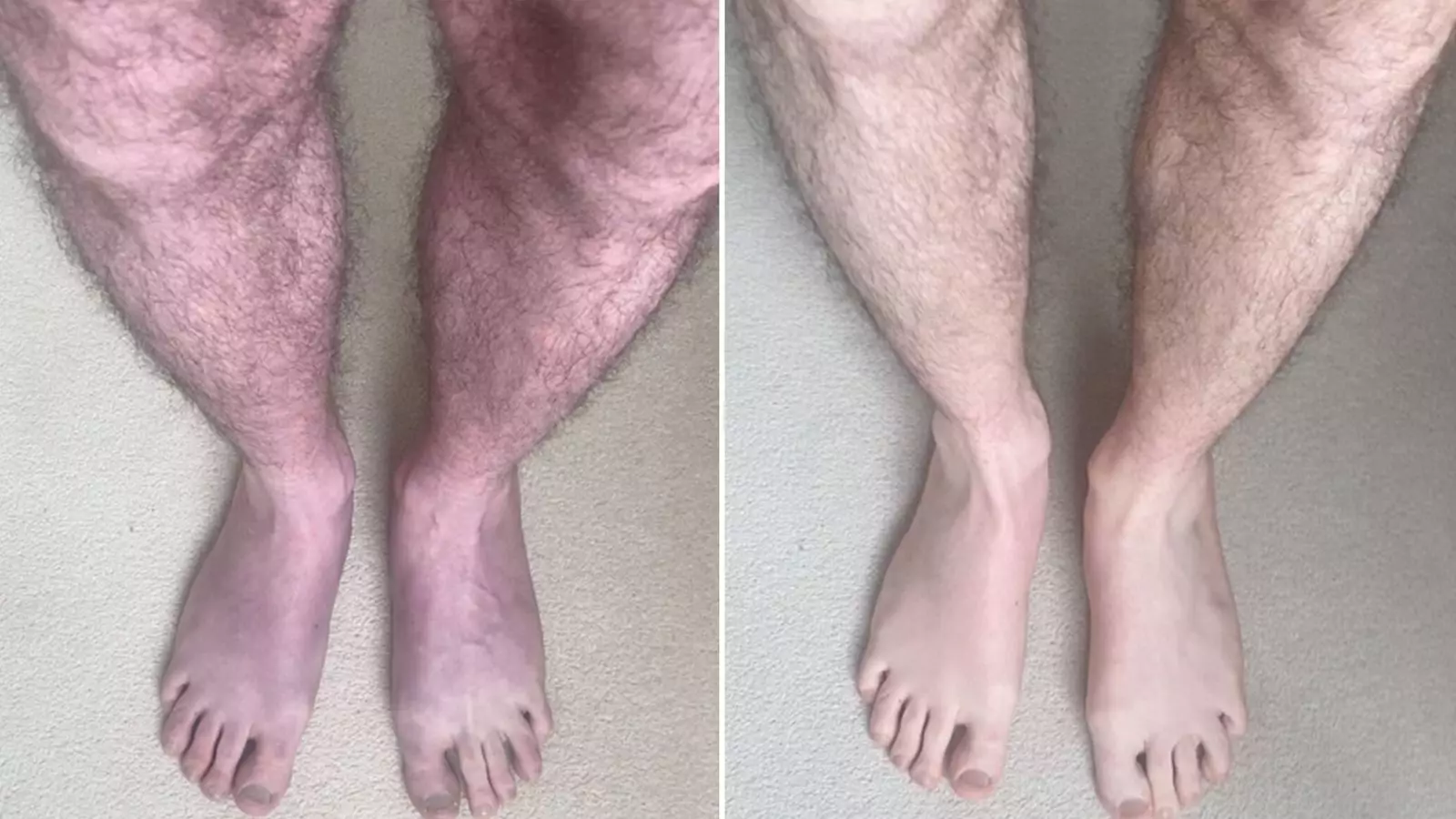In a peculiar and distressing case, a 33-year-old man’s legs turned blue after only 10 minutes of standing. This alarming phenomenon is caused by a condition called acrocyanosis, where leg veins fail to allow blood to flow back up to the heart and instead collect in a pool. As the man stands, his legs gradually turn redder and eventually become increasingly blue as the veins become more prominent. Additionally, he experiences an itchy sensation that further exacerbates his discomfort. However, after just two minutes of sitting or lying down, his legs return to their normal color. This extraordinary case, which sheds light on yet another potential side effect of long COVID, has been documented in a recent study published in the esteemed Lancet journal.
It is important to raise awareness of acrocyanosis as a symptom of long COVID, as patients experiencing such symptoms may not be aware of its association with the virus. Dr. Manoj Sivan, a respected researcher from the University of Leeds who authored the study, emphasizes the significance of understanding this link. He urges both patients and clinicians to recognize that acrocyanosis can be a manifestation of long COVID, thus alleviating unnecessary anxiety and concern.
The Complexities of Long COVID
Since the inception of long COVID research, numerous symptoms have been observed in those affected. This condition impacts multiple systems within the body, including the autonomic nervous system, which regulates blood pressure and heart rate. The dysfunction of the autonomic nervous system, referred to as dysautonomia, is also prevalent in other long-term illnesses like chronic fatigue syndrome. Consequently, long COVID often leads to a range of debilitating symptoms, such as difficulty concentrating and an impaired ability to perform routine activities.
Raising Awareness and Enhancing Understanding
By shedding light on this unique case of long COVID, researchers hope to enhance awareness and understanding of the wide-ranging effects of the virus. It is essential for healthcare professionals to recognize acrocyanosis as a potential manifestation of long COVID, enabling them to provide accurate diagnoses and appropriate treatment plans. Equally important is for individuals experiencing unusual symptoms after recovering from COVID to seek medical advice and remain proactive in their pursuit of answers.
Fostering Hope for Long COVID Patients
As the medical community continues to uncover the complexities of long COVID, it is crucial for patients to remain hopeful. While this condition poses numerous challenges, ongoing research provides promise for better diagnostic tools, treatment options, and a deeper understanding of the long-term effects of the virus. By sharing and analyzing unique cases like the one described here, progress in combating long COVID can be accelerated, ultimately improving the lives of those affected by this debilitating condition.


Leave a Reply